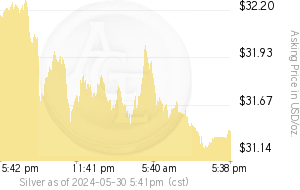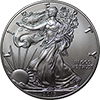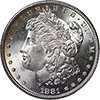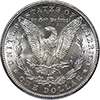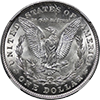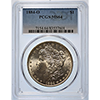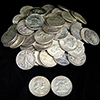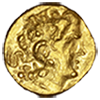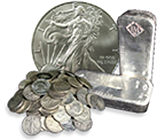
Investors buy silver because it typically has low correlation to stocks and bonds, so it can provide important diversification in a portfolio.
Physical silver for investment is most often bought in the forms of silver bullion coins made by government mints, silver rounds produced by private mints, silver bars or ingots, and classic silver coins and silver dollars.
Physical silver vs. paper silver
Many silver investors prefer physical silver to so-called paper silver like silver-based ETFs or silver mining shares. Physical silver is the metal itself, whereas paper silver is essentially a promissory note that represents silver or the possibility of future profits based on silver. Buyers commonly opt for physical silver because they want the actual asset in their possession. Paper silver always runs the additional risk of default. At AGE, we deal only in physical metals for just this reason.
Silver bullion coins
Bullion coins make buying silver very easy. Fabricated by government mints and sold through silver dealers, they are small, easy to transport, and extremely difficult to counterfeit. The Austrian Mint, British Royal Mint, Chinese Mint, Perth Mint of Australia, Royal Canadian Mint, South African Mint, and United States Mint all produce 1-ounce silver bullion coins. American Silver Eagles, made by the U.S. Mint, are the most popular silver bullion coins sold in America.
Silver rounds
Silver rounds are an excellent alternative to government silver bullion coins. These are typically 1-oz coins, or rounds, produced by well-established private mints like Sunshine Minting and A-Mark. When government mints are overwhelmed by demand, these private mints are there to provide top-quality minting and purity to silver investors. Silver rounds often trade at a smaller premium (price above silver melt value) than government silver bullion coins, making them an excellent value.
Silver bars and ingots
Silver bars or ingots are another popular way to add bulk silver to your precious metals portfolio. Fabricated by high-quality refiners like Republic Metals Corporation (RMC), silver bars are very cost-effective for large purchases. For example, RMC produces 100-ounce bars of .999 fine COMEX-registered silver, among the purest silver products on the market. Because of their larger size, the fabrication cost per ounce is much less in 100-oz bars, reducing the premium for the buyer.
Silver dollars
U.S. Morgan and Peace silver dollars were minted long ago for circulation as money. Today, they often trade at prices close to their silver melt value, especially in grades like Extremely Fine (XF), Almost Uncirculated (AU), and even Brilliant Uncirculated (BU), making them excellent substitutes for silver bullion. These classic silver coins contain more than three-quarters of an ounce of pure silver, and offer all the advantages of modern silver bullion coins plus additional benefits like historical significance, ongoing collector demand, and most important, true scarcity.
Whereas modern silver bullion coins like American Silver Eagles are minted in virtually unlimited quantities every year, classic silver dollars are limited in availability. Most have been lost or melted down. This true scarcity can mean higher premiums during periods of intense silver demand, especially in the higher Mint State grades. Canadian silver dollars minted from 1935 to 1966 offer similar benefits to bulk silver buyers.
US 90% silver coins
U.S. 90% silver coins are one of the most sought-after bulk silver products. Sometimes called "junk silver coins," these are circulated dimes, quarters, or half dollars minted in 1964 and earlier, when U.S. coinage was still made of real silver (90% silver, 10% copper). US 90% silver is among the most cost-effective way per ounce to buy bulk silver because no fees for refining or minting have been added to the cost. After all, these silver coins were made by the government for circulation long ago. With modern silver bullion coins and bars, a small manufacturing premium is always passed along to the investor.
Classic silver coins
Classic silver coins are a popular alternative to modern silver bullion coins for bulk silver investors. These are coins that were minted by governments for circulation back when silver was still money. Pre-1965 US silver coins, European silver, and World silver coins dominate this market. Many, especially classic European and World silver coins, trade at prices very close to their underlying silver melt value. Others, like scarce US silver coins in higher Mint State grades, trade at sizeable premiums over silver melt. Higher grade US silver coins are typically purchased by date and type for coin collections.
... Expand Text » Close «
